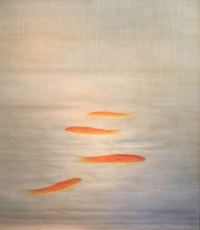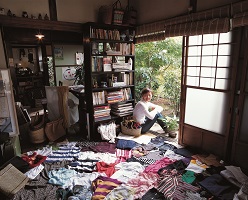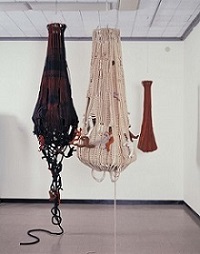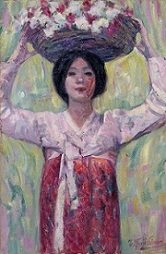Collection GalleryThe 2nd Collection Gallery Exhibition 2016–2017 (120 works in all)
Collection Gallery
HOME > Collection Gallery > The 2nd Collection Gallery Exhibition 2016–2017
The 2nd Collection Gallery Exhibition 2016–2017 (120 works in all)
Exhibition Period
6. 1 (Wed.) – 7. 24 (Sun.), 2016
Overview
The second collection gallery exhibition of this year features exhibits related to the exhibition entitled "Cuban Posters for Films" being held simultaneously at the Collection Gallery, and those related to the special exhibition entitled "HELLO, MY NAME IS PAUL SMITH" being held in the special exhibition gallery on the 3rd floor, as well as other exhibits with various themes.
This year celebrates the 100th anniversary of Dadaism (a.k.a. "Dada"), whose objective was to overthrow the conventional order and common sense involving art, and question again its true purpose. Originally launched in Zurich, Switzerland with "Manifesto," the movement quickly engulfed other European cities, exerting a tremendous influence on the state of art later on. Closer to the entrance to the Collection Gallery, in commemoration of the 100th anniversary of Dadaism, Max Ernst’s oil paintings, prints and illustrations for picture books are being displayed. Max Ernst was a leading figure of the Dadaist movement in Cologne, and later became a standard bearer of surrealism.
In the Japanese painting section, works depicting seasonal sceneries and customs from rainy season to mid-summer have been displayed. In particular, Fukuda Heihachiro’s "Red Carp," which we acquired last year, is on public display for the first time at our museum. Fukuda’s masterpiece, which was originally submitted to the 11th Teiten Exhibition, is noted for its subtle but effective depiction of the subjects, as exemplified by the slightly glittering scales of the carp and the detail of the raindrops. The Japanese folding screen featuring "Gion Festival" by Kitazawa Eigetsu is also on display after a long interval at our museum.

- FUKUDA Heihachiro, Red Carps, 1930

- TSUZUKI Kyoichi, HAPPY VICTIMS: Agnès b,
2001/2009
In conjunction with the special exhibition of Paul Smith on the 3rd floor, 26 works from Tsuzuki Kyoichi’s "Happy Victims" are also on display. Tsuzuki’s photos feature young people who have a strong, addictive obsession with famous fashion brand items. His photos have captured these urban dwellers’ tiny rooms which are packed with incredible volumes of clothes and accessories, and are presented together with detailed accounts of each person. It shows us what kind of habits and greed their indulgence on one fashion brand are based on.
His photos indicate the notion of fashion victimization, where there is a kind of conspiracy which exists between "the creators of fashion" such as Paul Smith, and "their followers" represented by those young people. They are indeed "happy victims" of the fashion industry.
In association with the exhibition "Cuban Posters for Films," under the title of "Special Feature: A Journey into Latin America," works related to Latin America, such as pottery and textile created by Latin American artists as well as photographs and paintings featuring sceneries and people of Latin America, are on display. As shown in the Cuban posters for films, there are common features and appealing aspects of their works, such as raw textures and stark contrasts between darkness and brightness.

- CORREAS, Nora, America Ⅰ, Ⅱ, Ⅲ, 1976-77

- FUJISHIMA Takeji, Flower Basket, 1913
This year is also the 50th anniversary of the death of Kawai Kanjiro, and this time, works with the motive of flowers have been put on display. Kanjiro’s "flowers" which are expressed in various forms, patterns and styles are indeed worthy of note.
Last but not least, under the title of "Women in Picture," female portraits by Japanese western-style painters from the Meiji to the Showa periods are being shown. It is interesting to compare differences in the expressions, unique styles and ideas of the respective artists.
Themes of Exhibition
- ・Works by Max ERNST
- ・Summer Scenery in Japanese-style Painting
- ・HAPPY VICTIMS
- ・Special Feature: A Journey into Latin America
- ・Flowers: Blooming in KAWAI Kanjiro’s Ceramics
- ・Women in Pictures
- ・[Outside] Outdoor Sculptures


